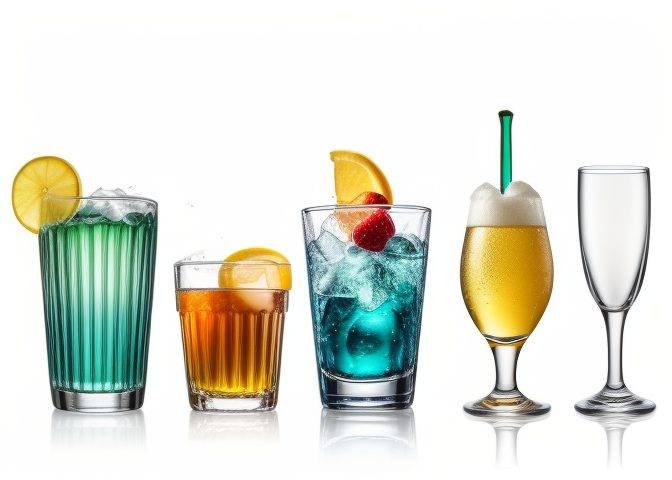As we navigate the journey of life, certain habits can either support our well-being or hasten the aging process. Among these, the impact of alcohol consumption on aging has garnered significant attention. While moderate alcohol consumption may have certain health benefits, excessive or chronic use can become a potent accelerant of the aging process.

Alcohol and Anti-Aging
Dehydration: A Prelude to Aging
Alcohol is a well-known diuretic, meaning it prompts the body to release more fluids than it takes in. This diuretic effect contributes to dehydration, a factor that can have a noticeable impact on skin health. Dehydrated skin appears dull, saggy, and less elastic, accentuating the appearance of fine lines and wrinkles. Long-term dehydration due to alcohol consumption can expedite the visible signs of aging.
Cellular Damage and Oxidative Stress
The metabolism of alcohol generates harmful byproducts that contribute to oxidative stress—a process that damages cells, proteins, and DNA. Oxidative stress accelerates the aging process, leading to cellular dysfunction and potentially promoting age-related diseases. The free radicals produced during alcohol metabolism can wreak havoc on the body’s natural defense mechanisms against aging.
Collagen and Elasticity: A Collateral Damage
Collagen, the protein responsible for maintaining skin’s strength and elasticity, can suffer collateral damage due to alcohol consumption. Alcohol interferes with the production of collagen, leading to weakened skin structure. As collagen levels decrease, skin becomes prone to sagging and the formation of wrinkles, giving rise to a prematurely aged appearance.
Inflammation: A Catalyst for Aging
Excessive alcohol consumption can trigger inflammation throughout the body. Chronic inflammation is closely linked to various age-related diseases, including cardiovascular issues, arthritis, and even cognitive decline. Inflammatory responses not only compromise internal health but also manifest as visible signs of aging, such as puffiness, redness, and increased skin sensitivity.
Impaired Nutrient Absorption
Alcohol interferes with the absorption of vital nutrients, including vitamins and minerals essential for skin health. Deficiencies in nutrients like vitamin A, vitamin C, and zinc can lead to dull skin, reduced collagen production, and impaired wound healing. The inability to adequately absorb these nutrients can contribute to an accelerated aging process.
Sleep Disruption: A Roadblock to Rejuvenation
Regular alcohol consumption can disrupt sleep patterns, leading to poor-quality sleep or insomnia. Quality sleep is critical for cellular repair, hormone regulation, and overall well-being. The lack of restorative sleep can exacerbate signs of aging, leaving skin looking tired and lacking its natural radiance.
The Bottom Line: Moderation and Balance
Understanding the impact of alcohol on the aging process underscores the importance of moderation and mindful consumption. While a glass of wine may offer certain health benefits, excessive or chronic alcohol use can fuel oxidative stress, inflammation, and cellular damage that accelerate aging. Embracing a lifestyle that prioritizes hydration, balanced nutrition, quality sleep, and limited alcohol consumption can contribute to graceful aging and vibrant well-being. As always, consulting with healthcare professionals to understand how alcohol consumption fits into your individual health plan is advisable.
References:
- Thiele, J. J. (2001). Etiologic mechanisms of photoaging of the skin. Investigative Dermatology Symposium Proceedings, 6(1), 1-3.
- Ojha, R., & Singh, J. (2015). Effects of alcohol on skin. Advances in Dermatology and Allergology/Postȩpy Dermatologii i Alergologii, 32(1), 15-19.
- Poljsak, B., & Dahmane, R. G. (2012). Free radicals and extrinsic skin aging. Dermatology Research and Practice, 2012.
- Rhodes, L. E., & Perrett, C. M. (2007). The acute effects of ultraviolet radiation on the developing human skin. Photochemical & Photobiological Sciences, 6(6), 715-721.
- Puri, P., Nandar, S. K., & Kathuria, S. (2017). Reticulate acropigmentation of Kitamura: a clinical and histopathological study. Indian Dermatology Online Journal, 8(6), 473-478.
- Wunderlich, C. R., Balagopal, S., & Van Ness, J. S. (2017). The influence of moderate alcohol consumption on heart rate variability and blood pressure oscillations across a wide age span. Alcoholism: Clinical and Experimental Research, 41(5), 1075-1082.
- Ågren, M. S. (2001). Use of ultrasound in cosmetic dermatology. Journal of Cosmetic Dermatology, 1(2), 88-93.
